Proactively Flag and Support At-Risk Students with Element451
Give every at-risk student timely, personalized guidance with AI agents that identify warning signs early, deliver instant outreach, and connect them to the right support.
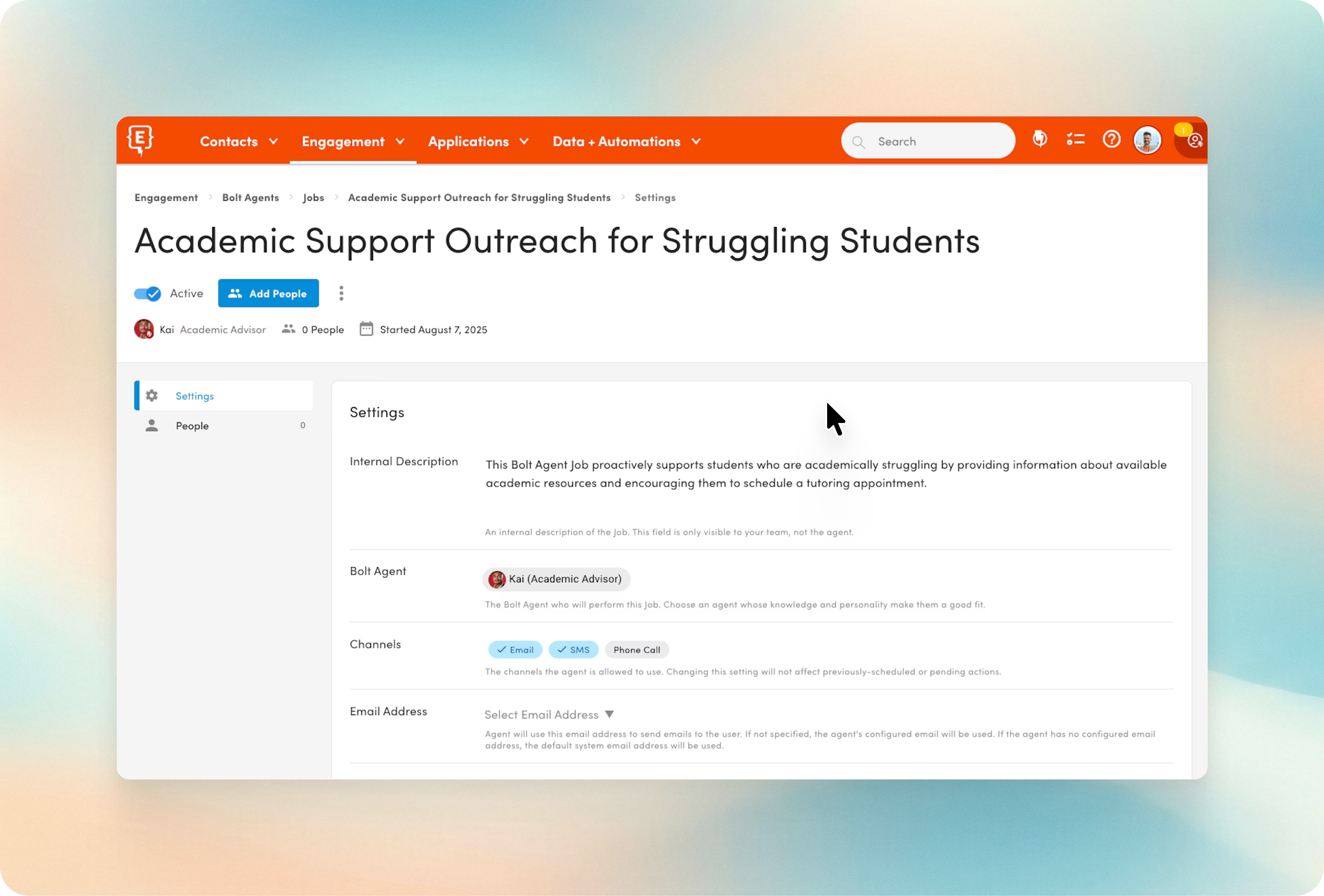
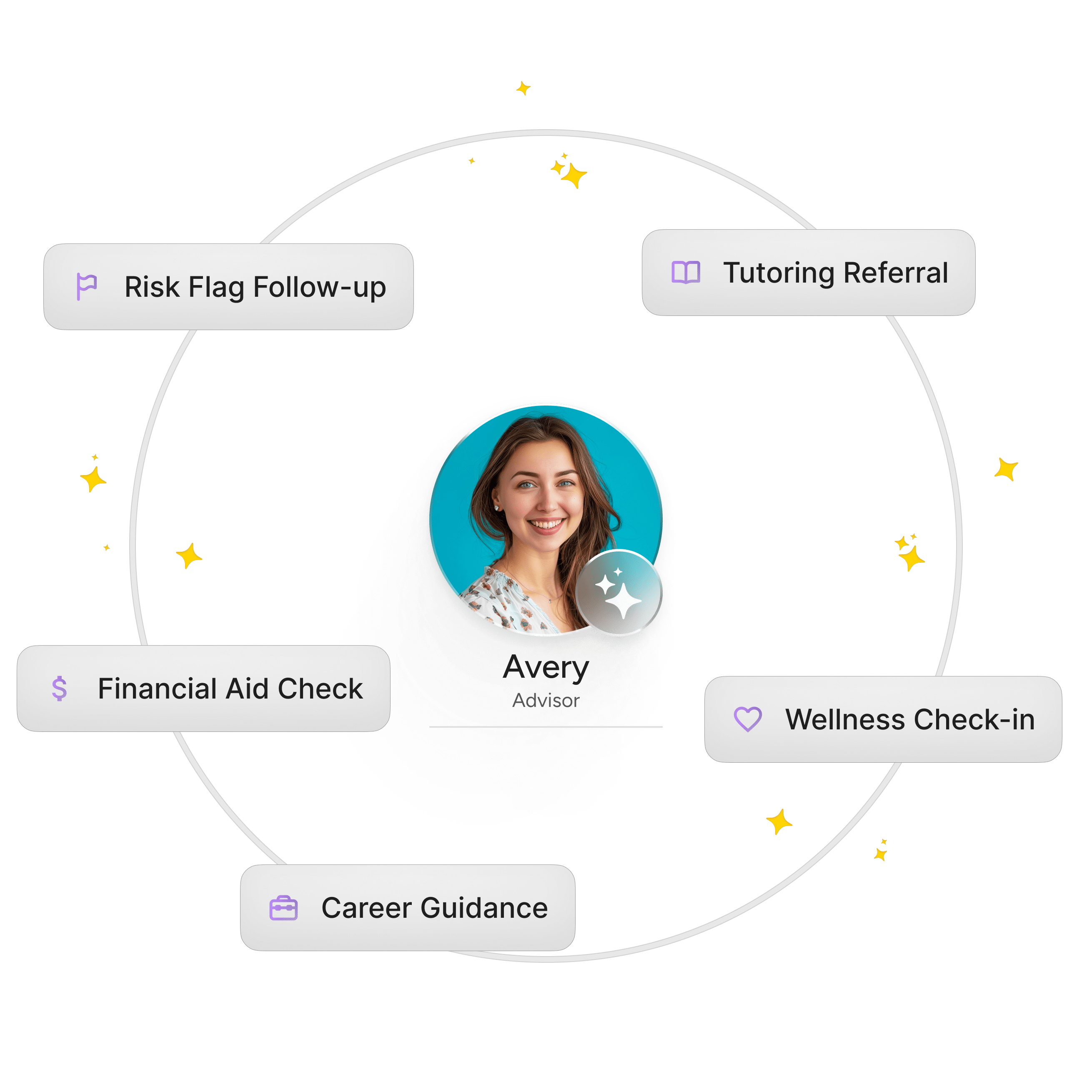
Add and Organize Your Advising Team
Add the staff who advise students and group their caseloads by major, program, or any structure your school uses. Then define a few common follow-up actions for when concerns arise. This foundation helps Element451 guide advisors and AI agents to act quickly and consistently.
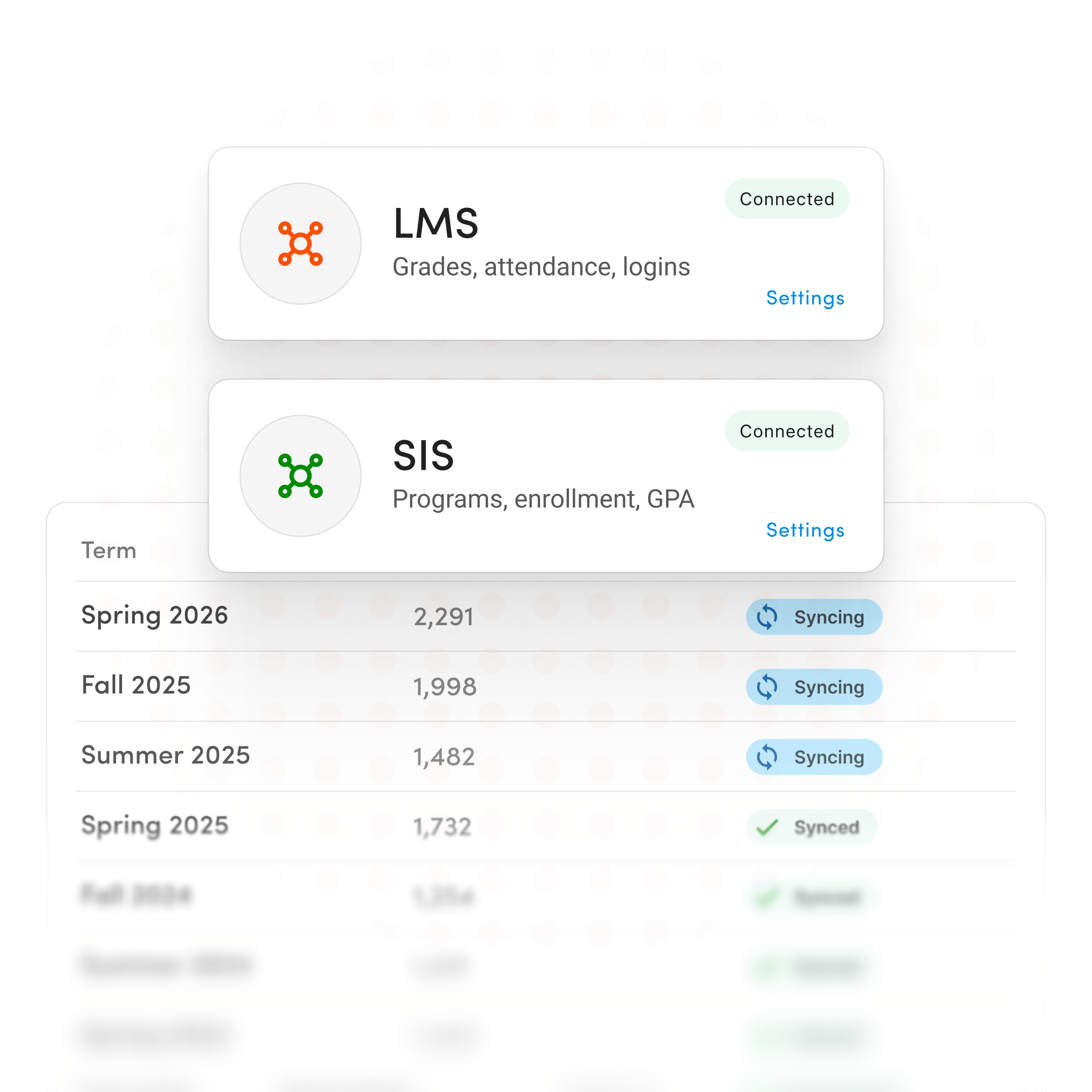
Connect Academic Data
Easily connect your academic and enrollment data from most SIS and LMS platforms using Element451’s native course integrations. Once connected, the platform surfaces early signs of academic struggle—like low grades or missed logins.
Explore Integrations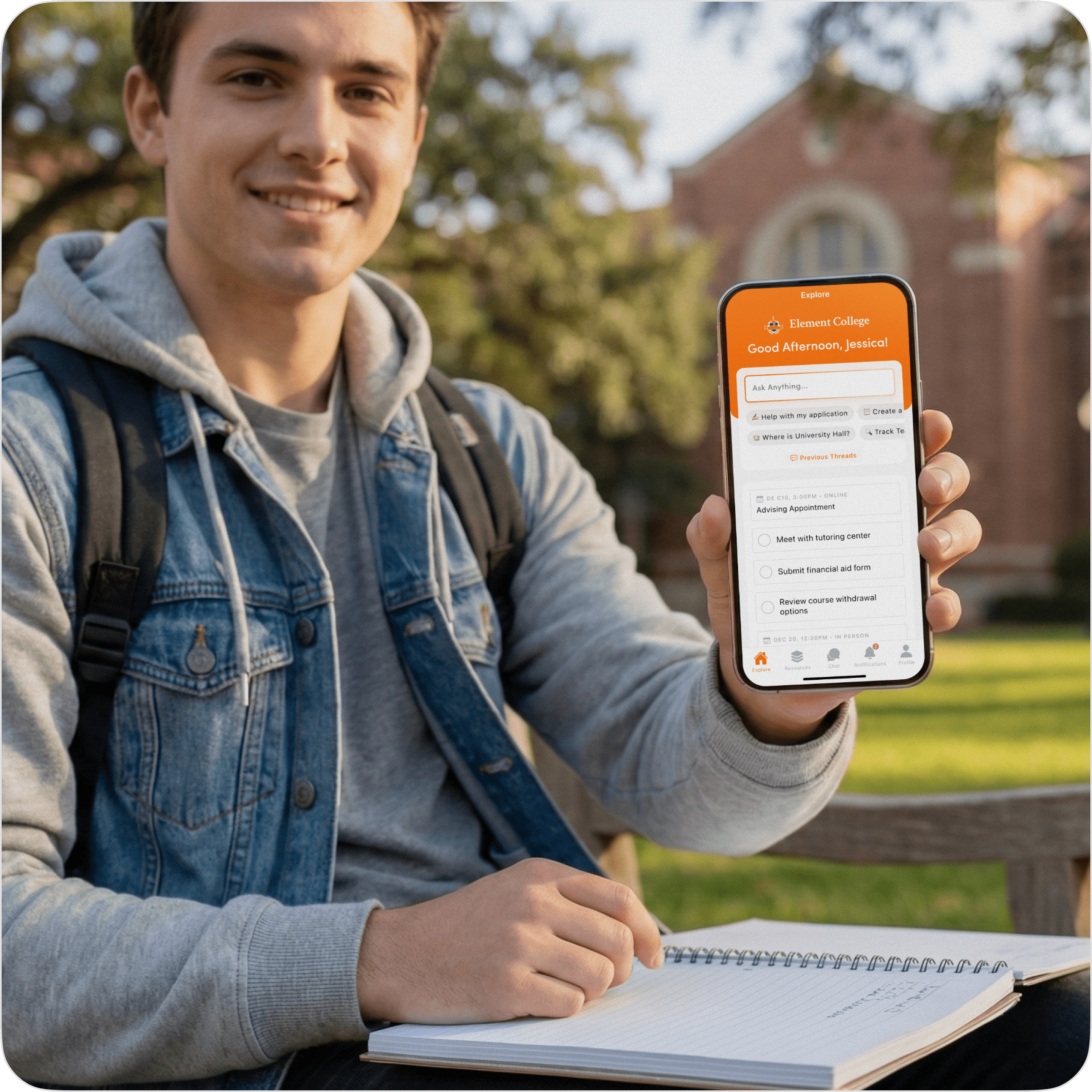
Turn On StudentHub, the Mobile Portal for Students
Activate StudentHub, the mobile-friendly portal where students can reach AI agents and staff right from their phones. StudentHub makes next steps easy to see and complete, helping students stay organized and supported.
Explore StudentHub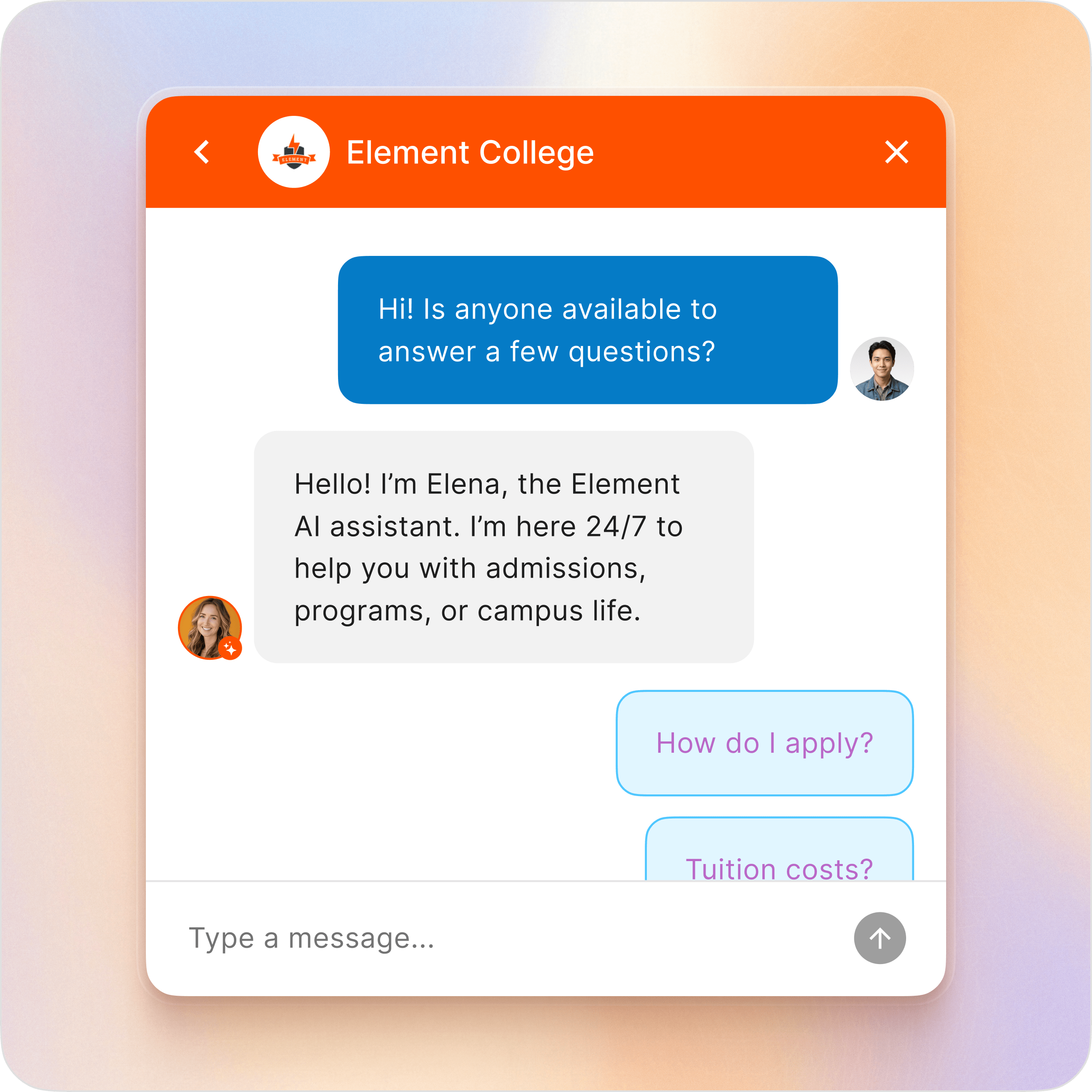
Create AI Agent for Inbound Questions
Set up an Academic Advisor Agent in minutes to give students help anytime. Agents answer common questions and even book appointments, lightening your team’s load while making support more accessible.
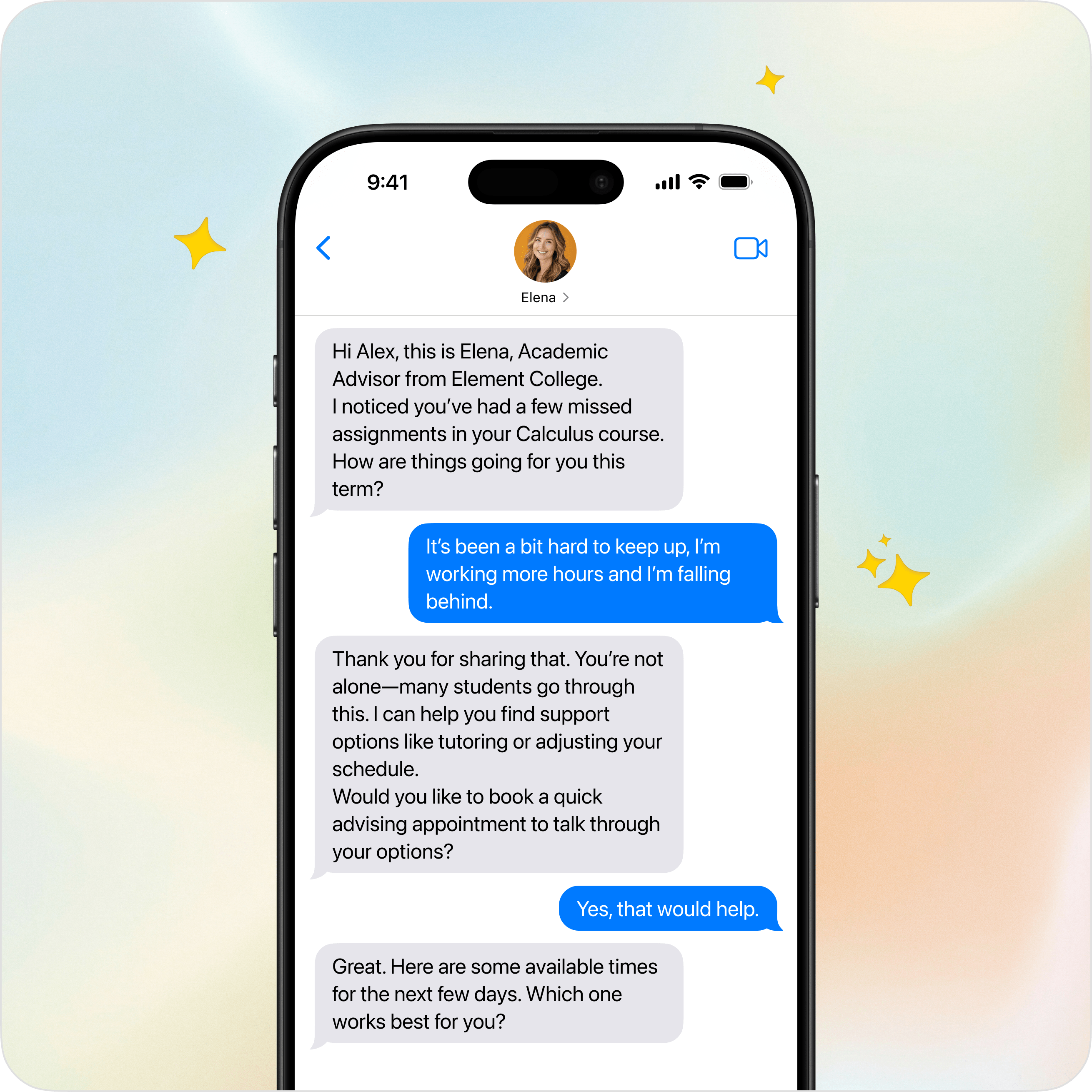
Use Your Agent to Reach Out Proactively
Extend your Advisor Agent’s role by having it spot early concerns and connect with students before issues grow. With timely outreach and clear next steps, the agent helps students engage with support sooner.
Revolutionize Your Student Support
Talk to us about your student support goals, and we’ll show you how Element451 can help you reach them.
On-Demand Academic Advising is Just The Start
Element451 empowers you to reach students at the right moment with the support they need to stay on track.
Supportive. Proactive. Always On.
With AI agents offering proactive outreach and on-demand help, your support stays responsive around the clock—giving students guidance whenever they need it.
Proactive Outreach When Risk Appears
Immediate Help When Students Ask
Personalized Guidance at Scale
Higher Engagement Through Timely Support
More Time for Meaningful Student Conversations

How Can I Use AI to Better Support At-Risk Students?
How does Element451 identify students who may be struggling?
Will students know they’re getting help from an AI agent?
How quickly can students get help when they reach out?
Can advisors personalize support even with large caseloads?
Can Element451 fit our existing academic support workflows?
How do we know if our early support efforts are working?

Talk With Us
Element451 is the only AI Workforce Platform for higher education. Our friendly experts are here to help you explore how Element451 can improve outcomes for your school.
Get a Demo



